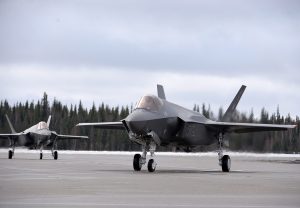
The ongoing tactical aircraft (TACAIR) study by the U.S. Air Force, the Joint Staff, and the Pentagon office of Cost Assessment and Program Evaluation (CAPE) may offer a range of future fighter options for the U.S. Air Force to replace its F-16 fighters and neck down from the service's seven current fighter types--the Lockheed Martin [LMT] F-16, F-35A, and F-22 and the Boeing [BA] F-15C, F-15D, F-15E and A-10. "I’m really looking for a window of options because the facts…














